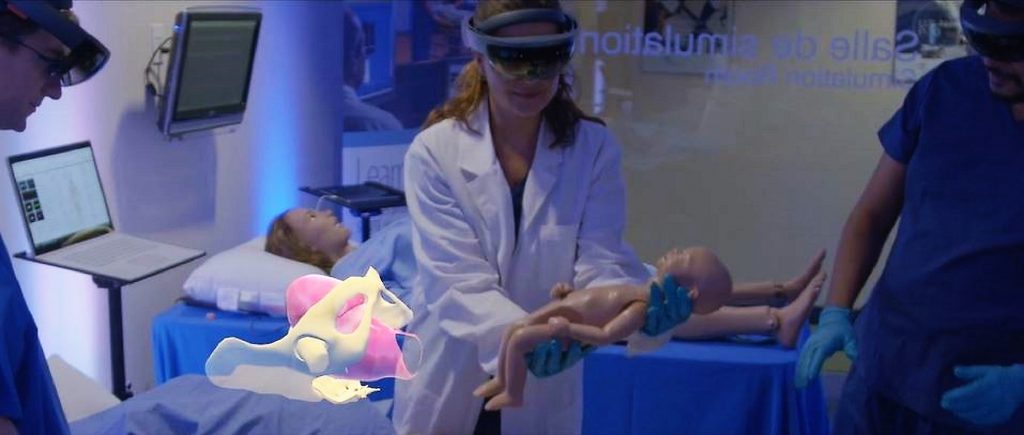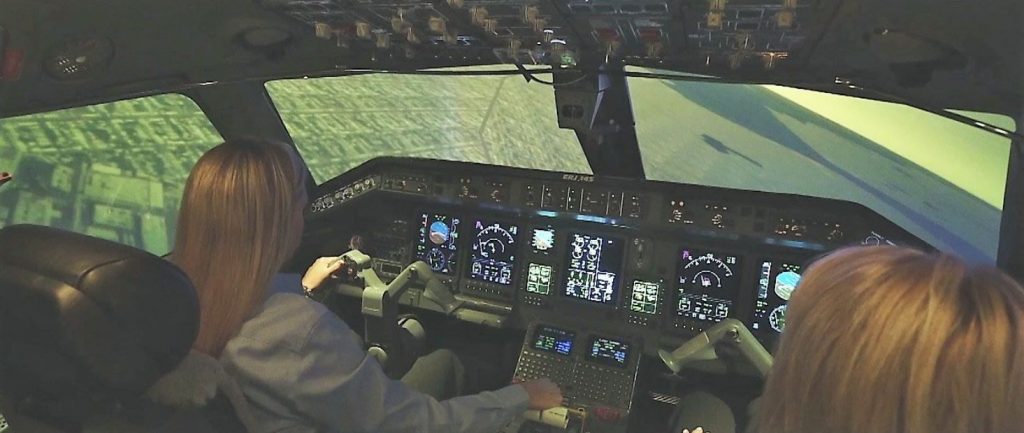The birth was seconds away. The mother rested on her back while a medical student sat at the foot of the bed, blue surgical gloves on her hands – a scene common to delivery rooms everywhere. Except the mom was a manikin, her fetus was a manikin and the student wore Microsoft HoloLens.
Using the device, the student looked at the mother’s abdomen and saw a hologram of the fetus inside the womb before it rotated and descended the birth canal. Then, her mixed-reality training session got tricky.
Suddenly, the baby’s shoulders became stuck inside the mother, a risky complication – but an emergency purposely triggered by a classroom instructor. The student had to act fast. She placed her hands on the tiny manikin and gently freed the shoulders, safely completing another digital delivery.
CAE LucinaAR – the first human-patient simulator augmented with HoloLens – simultaneously delivered another digital lesson. The technology comes from CAE, a Canadian company that offers virtual-to-live training solutions to assess human performance, improving overall safety from health care to civil aviation to defense operations.

“CAE operates in three sectors where the stakes are high, where there’s no room for error and where the people need to be properly trained to be ready for unlikely situations that could lead to catastrophes,” says Dr. Robert Amyot, president of CAE Healthcare, one of CAE’s three business segments.
“On-the-job training is dangerous and costly,” adds Amyot, a cardiologist by trade. “So, we train pilots to make flying safer. We train the forces in our defense and security division to make them more prepared for their missions. And we train clinicians and health care providers to improve patient safety.”
By going digital, each of those training regimens is becoming more precise at pegging and addressing human vulnerabilities, says Marc Parent, the CEO at CAE.
In the realm of aviation, CAE guides pilots to prep for potential airborne adversities by using individualized simulations built with artificial intelligence and the Internet of Things (IoT).

“Although it’s the safest mode of transportation in the world, pilots have long been assessed in a subjective way,” Parent says. “But now, by leveraging the data that our simulators are giving us – powered by the cloud – we can give them an objective assessment in real time. That’s invaluable.
“When the pilots go into our simulator, we are able to give them personalized insights into their skills, into how they perform different operational practices. This raises their level,” Parent says. “And practice makes perfect.”



